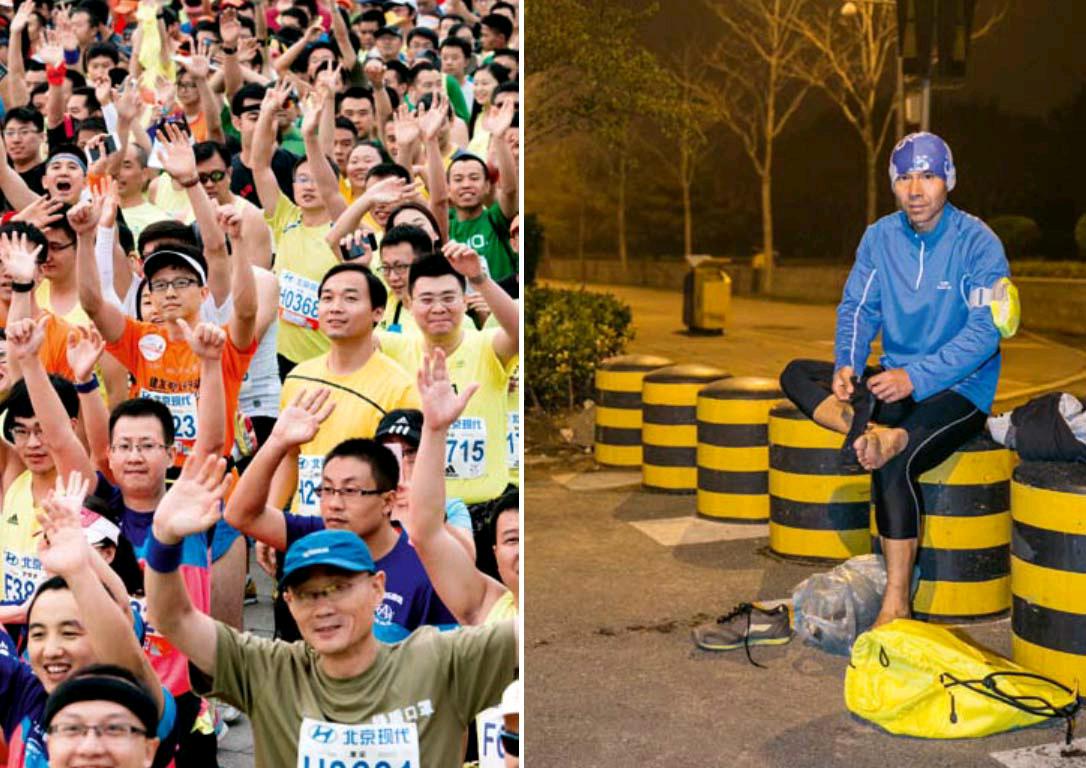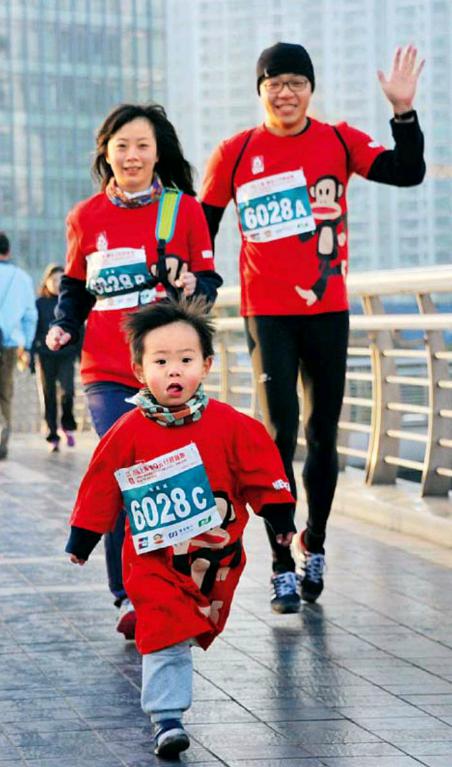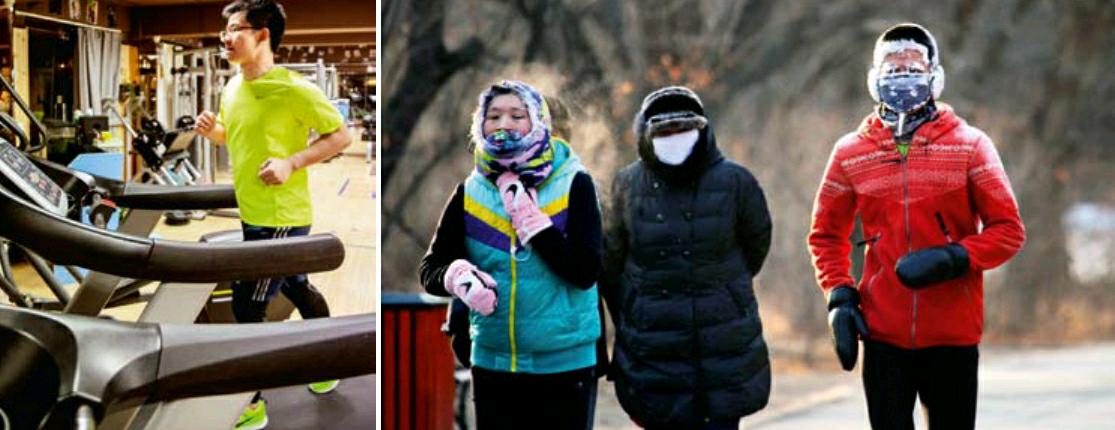Running for Life
2016-03-16byRuYuan
by+Ru+Yuan
Running Fever
On January 2, 2016, a gun heralded the start of the Xiamen International Marathon, where 32-year-old Yao Ruichong and his wife Jia Jia joined 30,000 other runners in beginning the New Year by completing a 42.195-kilometer race. After four and a half hours of running, Yao arrived at the finish line where he met his wife an hour later. According to rules of the 2016 Xiamen International Marathon, both he and his wife have completed the race in six hours and 15 minutes, officially.
Yao works for a large Beijing-based State-owned enterprise. In order to travel the 42.195 kilometers on foot, he and his wife flew 1,800 kilometers from Beijing to Xiamen. If the couples excitement was any indicator, the trip was worth it. “We were already super excited just to be able to come to Xiamen for the event. Getting into the race could only happen through a lottery, but were both here!” exclaimed Yao.
Only a decade ago, Chinas marathon organizers still struggled to find enough participants. Several years ago, a map of“hot routes” for long-distance runners around the world went viral on Weibo, the Chinese equivalent of Twitter. Areas traveled frequently by runners were marked in dark orange, such as Victoria Peak and both banks of Victoria Harbor in Hong Kong, routes along Taiwans Tamsui River and Taipeis Civic Boulevard, and the route along Seouls Han River. Several cities, such as Tokyo, London, and New York, were completely covered in heavy orange. Compared with other global metropolises, however, the orange in Beijing and Shanghai was sparse. In 2013, the situation changed suddenly. Running became the most popular sport in China overnight.
During the Shanghai International Marathon in September 2014, the 18,000 entries were “looted” within just a few hours, a phenomenon Chinese netizens jokingly called “harder than getting a train ticket during Chinas Spring Festival travel rush.” One month later, applicants for the 2014 Beijing Marathon exceeded 21,000. Since demand meant it would be extremely difficult to get a spot, the Beijing Marathon became the first in China to apply the international practice of a lottery. According to the organizing committee, only about 14.2 percent of applicants won the chance to run.
With so many runners across the country now, China has seen a rapid increase in running competitions and marathons. Already, 49 marathons have registered with Chinese Athletic Association, among which Shanghai International Marathon, Beijing Marathon, and Xiamen International Marathon are Gold Label events designated by International Association of Athletics Federations (IAAF). IAAF classifies world-class foot races around the world with Gold, Silver and Bronze labels. In 2012, the Li-Ning 10-Kilometer Running League had only three stops in China and about 1,000 applicants at each stop. In 2015, the race expanded into 10 cities, with average applicants of 5,000 in each city.
In Chinese app stores, the character for “run” will return nearly 1,000 results. Codoon, a renowned Chinese fitness app, has been downloaded nearly 10 million times. The company claims that because of preinstalls on smart bracelets, their user base has already reached 20 million.
All the numbers show that Chinese people are running a lot more these days.
Sparking the Fire
Reasons behind the seemingly sudden and unexpected nationwide running craze are mysterious. Increases in Chi- nese wealth certainly play a key role in runnings popularity. In 2014, per capita GDP of China exceeded US$7,000, with eight provinces and municipalities such as Beijing, Shanghai, and Guangdong topping$10,000. While fewer and fewer Chinese people struggle for basic living necessities, they begin to seek more entertainment and quality activities and spend more on consumption such as travel, working out and recreation. “Running is the new faith of Chinas middle class,” declared some Western media outlets.
The popularities of social media and the mobile internet fuel the running flames. In 2012, Nike and Apple jointly launched the Nike + Running app that tracks usersmovement and progress while encouraging runners to share their data on social media. Since then, various apps leveraging sports data have emerged in China, greatly promoting the development of running with the general public. Running has been successfully transformed into a semi-social activity. Some runners meet online, others by crossing paths, and some turn to friends or organizations. Some closely monitor their friends progress and rank each other on social media, and others announce they are setting out on social media before lacing up. Running has become a new way to show off. Posting motion data or a selfie while running is en vogue. It demonstrates that the runner is leading a healthy life, which greatly contrasts youngsters drinking, smoking, and indulging in night life as well as boring middle-aged fat people.
Big Market and Fat Price Tags
Another factor may be that running can be quite economical. The biggest expenditure traditionally is only a pair of sneakers. However, things have changed today.
Yao Ruichong began running two years ago. “I ran my first half-marathon at the 2014 Beijing Marathon,” recalls Yao. Back then, his only supplies were a T-shirt from the organizing committee, shorts, and a fairly worn pair of running shoes. At this years Xiamen race, he brought a running watch, quick-dry clothes, compression tights, a belt bag, visor, sweat band, energy gel, salt stick, and a pair of professional running shoes, which altogether cost about$600, not even including the round-trip flight from Beijing to Xiamen.
It is easy to spot the huge market for equipment such as Yaos. Nike and Adidas, two sports giants, have been respectively sponsoring two of Chinas marathons for several years. Color Run, a popular event with young people in recent years, is sponsored by American footwear manufacturer New Balance.
By sponsoring various running and marathon events, more international sports brands are aiming at the growing Chinese market. Many sports brands predict that specialized stores for running gear will soon explode in China. Athletes can find everything related to running in such stores. “China has a large population. Running, as a low-barrier sport, welcomes almost everyone,” declared a participant at the 2015 China Running Industry Forum.“If we have tens of million of people running, we can easily embrace a market of nearly $10 billion.”